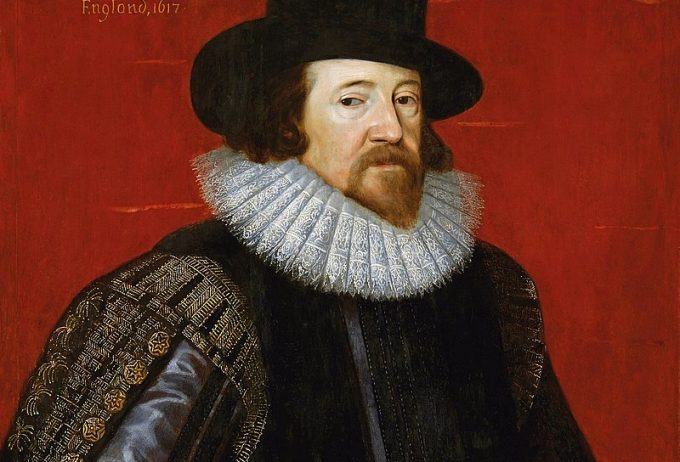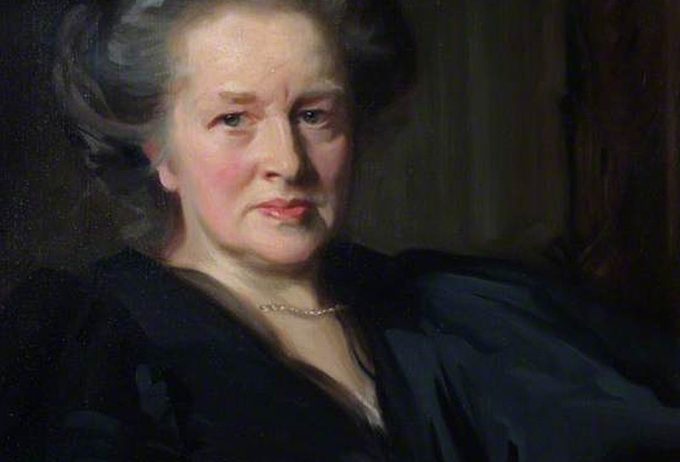People of St Marylebone
Changing Faces of St Marylebone
Here are fifteen figures that we have picked out due to their lasting influence!
Heritage
Francis Bacon
Francis Bacon (1561-1626) was a philosopher, writer and statesman who served as Attorney General and Lord Chancellor of England. He had a long political career, serving under Elizabeth I and James VI. Not surprisingly he was in and out of royal favour. Apart from his royal duties he was a prolific writer on philosophical matters, particularly the importance of science and the scientific method.
Learn more
Octavia Hill (1838 - 1912)
Octavia Hill is most famous today as one of the founders of the National Trust. But she spent most of her life working to improve the conditions of the poor in London. She came from a family of social reformers and her father’s bankruptcy put a stop to her education and forced her into work; her first job was making toys for children attending the Ragged Schools. She was then promoted to run the toymaking workroom, which employed children who had left the Ragged Schools.
Learn more
Sake Dean Mahomed
Sake Dean Mahomed introduced not only Indian food to Britain, but also the practice of shampooing hair. He was an Indian writer, traveller and entrepreneur.
He came to London in 1810 and opened the first Indian restaurant in London: the Hindoostane Coffee House in George Street, near Portman Square. The restaurant also offered a home delivery service. It was aimed at those who had served in the East India Company or had been sent to India with the Army, but it was ahead of its time; potential customers preferred to train their own chefs to produce the dishes at home. The restaurant closed in 1812.
Undeterred, Mahomed and his family moved to Brighton and opened steam baths which offered Indian shampooing (a Hindu word meaning massage) with scented oils. It was an immediate success and Mahomed became known as “Dr Brighton”. Mahomed’s skills clearly didn’t lie in business management because this venture failed too, closing in 1830.
Mahomed’s private life was as colourful as his business affairs. He was married twice, the second time in St Marylebone parish church bigamously, while still married to his first wife. Both marriages were inter-racial, then unheard of, and Dean Mahomed’s grandchildren changed their surnames to avoid racial abuse at a time when mixed marriages were disapproved of.
Though neither of Mahomed’s businesses survived for long, during their short lifetimes they burned so bright that they changed the British language and palate for ever.

Elizabeth Garrett Anderson (1836-1917)
Garrett fought both prejudice and the medical establishment to become the first woman in Britain to qualify as a doctor. Born in Suffolk, she was educated, as was customary for girls, in the arts, humanities and languages and skills such as deportment. Garrett however yearned to learn maths and sciences and studied these in her own time. Through family friends she met Emily Davies, the early feminist and later co-founder of Girton College, Cambridge, who became a lifelong friend.
Learn more
John Nash (1752-1835)
Nash is known today as the architect of Regency London, the man who designed the sweeping white stucco terraces that defined an era, as well as iconic set-piece buildings such as Buckingham Palace and the Royal Pavilion in Brighton. But this stellar success came late in his career, which had a faltering start.
Learn more
Evelyn Dove (1902-1987)
St Marylebone parish church has always been known for its glorious music and a number of institutions with musical connections are also based in the parish. One of these is the Royal Academy of Music, which moved into a new building on Marylebone Road in 1911. Evelyn Dove trained at the Academy before touring the United Kingdom’s clubs with a band made up of West African, British West Indian and American musicians.
Learn more
Ita Ekpenyon (1899-1951)
Ekpenyon was a Nigerian headmaster who came to the United Kingdom in 1928 to study law. When World War II broke out in 1939 he was too old to enlist so instead became an Air Raid Precautions (ARP) Warden. He was the only known black Warden. Ekpenyon became a senior ARP Warden in D Section of the St Marylebone Borough Council Civil Defence Volunteer Unit, in charge of enforcing the blackout, keeping order in public air raid shelters and helping people to safety.
Learn more
Margherita, Baroness Howard de Walden (1890-1974)
Margherita van Raalte married the 8th Baron Howard de Walden, Thomas Scott-Ellis, in St Marylebone in 1912. He was then rumoured to be the richest man in England. They divided their time between Chirk Castle in Wales and Seaford House in Belgrave Square, which Thomas had decorated with friezes, panelling and a staircase of green onyx specially imported from South America.
Learn more
Joseph, Baron Lister (1827-1912)
Lister, who lived in Harley Street and Park Crescent in Marylebone, invented Listerine, which was originally a surgical antiseptic. But behind this attention-grabbing fact lies Lister’s extraordinary work as a pioneer of antiseptic surgery and preventative medicine.
Learn more
Florence Nightingale (1820 – 1910)
Nightingale will forever be known as “The Lady with the Lamp” and is best known for her work in the Crimean War, where she cut the hospital death rate by enforcing handwashing and cleanliness. There are however more facets to Florence Nightingale. She was also a pioneer in the discipline of statistics, presenting her analysis of data in the form of graphs and diagrams to make it easier to draw conclusions. She is most famous for her use of the polar area diagram (a highly sophisticated pie chart), also called the Nightingale rose diagram.
Learn more
Mary Seacole (1805-1881)
Mary Seacole was born in Jamaica, the daughter of a Scottish soldier and a Jamaican mother. Seacole’s mother was a healer who used traditional Caribbean and African herbal medicines and was nicknamed “The Doctress”. At this time Jamaican doctresses combined folk medicine, the use of herbs and a knowledge of tropical diseases with a general practitioner’s skill in treating minor ailments and injuries which they had developed from looking after fellow slaves on sugar plantations.
Learn more
Frederick Denison Maurice (1805–1872)
Maurice, who lived at 2 Brunswick Place, is now little known, but left a lasting legacy in the field of education. Maurice’s deeply held Christian beliefs informed his life. He saw a need for a moral and social regeneration of society, and this led him to Christian socialism. He was the leader of the Christian Socialist Movement from 1848 until it folded in 1854, insisting that “"Christianity is the only foundation of Socialism, and that a true Socialism is the necessary result of a sound Christianity."
Learn more
Emily Davies (1830 – 1921)
Davies, who lived in Marylebone, is famous as a suffragist and co-founder of Girton College, Cambridge. Originally however she was interested in becoming a doctor and wrote several articles on women doctors for the feminist English Woman’s Journal. She then moved to London to edit the magazine and became part of a circle of women who included Elizabeth Garrett Anderson, another Marylebone resident and the first woman in the United Kingdom to become a medical doctor.

Ada, Countess of Lovelace (1815 – 1852)
Augustus Ada King, Countess of Lovelace (née Byron), lived in St Marylebone and her father, Lord Byron, was baptised in the third parish church building. Before becoming a resident Ada was a frequent visitor to the homes of Charles Babbage at 5 Devonshire Street and 1 Dorset Street.
Learn more
Henry Sylvester Williams (1867 – 1911)
Williams was a lawyer, born in Trinidad and educated in the United States and Canada before moving to Britain. In 1897 he founded the African Association to "promote and protect the interests of all subjects claiming African descent, wholly or in part, in British colonies and other place, especially Africa, by circulating accurate information on all subjects affecting their rights and privileges as subjects of the British Empire, by direct appeals to the Imperial and local Governments."
Learn more
